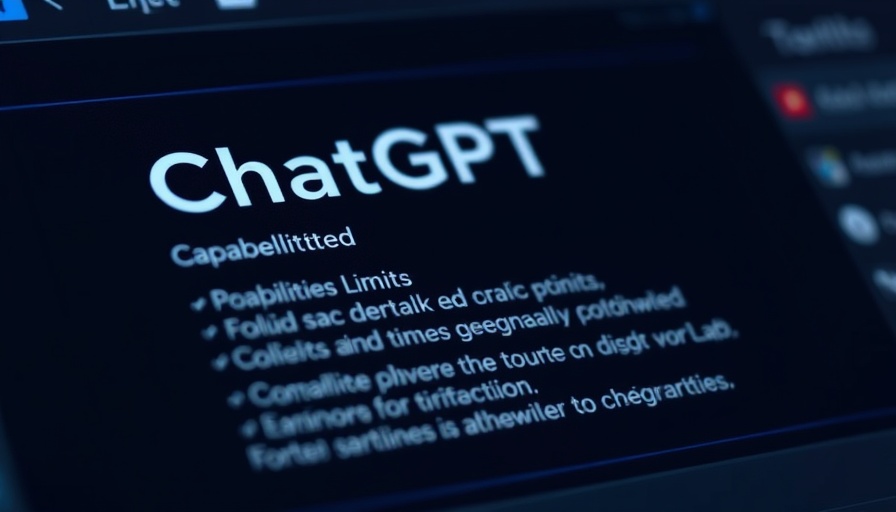
OpenAI's GPT-4.5: A Look into Its Performance and Capabilities
OpenAI has recently launched its latest model, GPT-4.5, a significant development in the evolution of large language models (LLMs). However, the reception from AI enthusiasts has been mixed, with some heralding it as a remarkable advancement while others are left unimpressed. At a subscription cost of $200 per month for the premium ChatGPT Pro, accessibility is already limited, raising questions about its true value versus cost.
Understanding GPT-4.5: Innovations and Improvements
GPT-4.5 is being presented as OpenAI's largest and most sophisticated model to date. According to its developers, the model boasts improved conversational abilities, aiming for a more human-like exchange. Compared to its predecessor, GPT-4, which already set high standards, GPT-4.5 claims to deliver more reliable responses and fewer hallucinations—inaccurate or fabricated information. From 61.8% for GPT-4 to 37.1% for GPT-4.5, this statistic is intended to bolster user confidence in the system, especially for applications in customer support and content generation.
Contrasting Perspectives: Is GPT-4.5 Revolutionary?
Critics are cautious. Some, like Teknium, co-founder of Nous Research, question whether the advancements justify the exponential growth in effort and resources. “It’s been 2+ years and of the thousands of improvements,” they argue, “what has actually changed?” While others highlight enhancements in user experience and emotional intelligence, naysayers see GPT-4.5 as a lackluster stopgap. Waseem Alshikh from Writer articulately expresses this skepticism: “GPT-4.5 feels like a shiny new coat of paint on the same old car.” Suggestions of pivoting towards efficiency rather than merely 'super-sizing' the model highlight a criticism that OpenAI faces in consistently pushing boundaries.
Market Position and Comparisons
The backdrop of the launch is increasingly competitive, with alternatives from Anthropic’s Claude and Google’s Gemini putting pressure on OpenAI to redefine its benchmarks. For instance, despite improvements in conversational quality, GPT-4.5 reportedly struggles in areas such as debugging or complex problem-solving compared to more specialized models. This prompts an industry-wide inquiry: Are general upgrades in LLM capability worth the escalating costs associated with them?
What the Future Holds for OpenAI and GPT
Sam Altman, OpenAI’s CEO, has hinted that GPT-4.5 will serve as a stepping stone for the next generation of models, with GPT-5 anticipated to integrate reasoning capabilities alongside traditional attributes. This hybrid approach hopes to marry the two realms of intuitive conversation and logical processing, as users demand more robust AI systems capable of sophisticated tasks.
The Broader Impact of GPT-4.5's Features
As organizations delve into AI adoption, understanding the nuanced impacts of models like GPT-4.5 becomes critical. Enhanced communication abilities can lead to improved customer engagement and innovative content creation; however, the balance between potential and performance remains a tightrope walk. In sectors where user experience is paramount, the ability of GPT-4.5 to generate natural dialogue may usher in a new era of AI interaction.
Final Thoughts: Navigating the AI Landscape
The mixed reception of GPT-4.5 prompts reflection on the trajectory of AI and its applications. AI enthusiasts are encouraged to critically engage with evolving technologies, balancing anticipation with scrutiny. The pressing question remains: as OpenAI forges ahead, will it keep pace with the rapidly advancing needs and expectations of users? As we watch OpenAI's strategies unfold, we must also continue to evaluate their implications on the industry as a whole.
 Add Row
Add Row  Add
Add 




 Add Row
Add Row  Add
Add 

Write A Comment